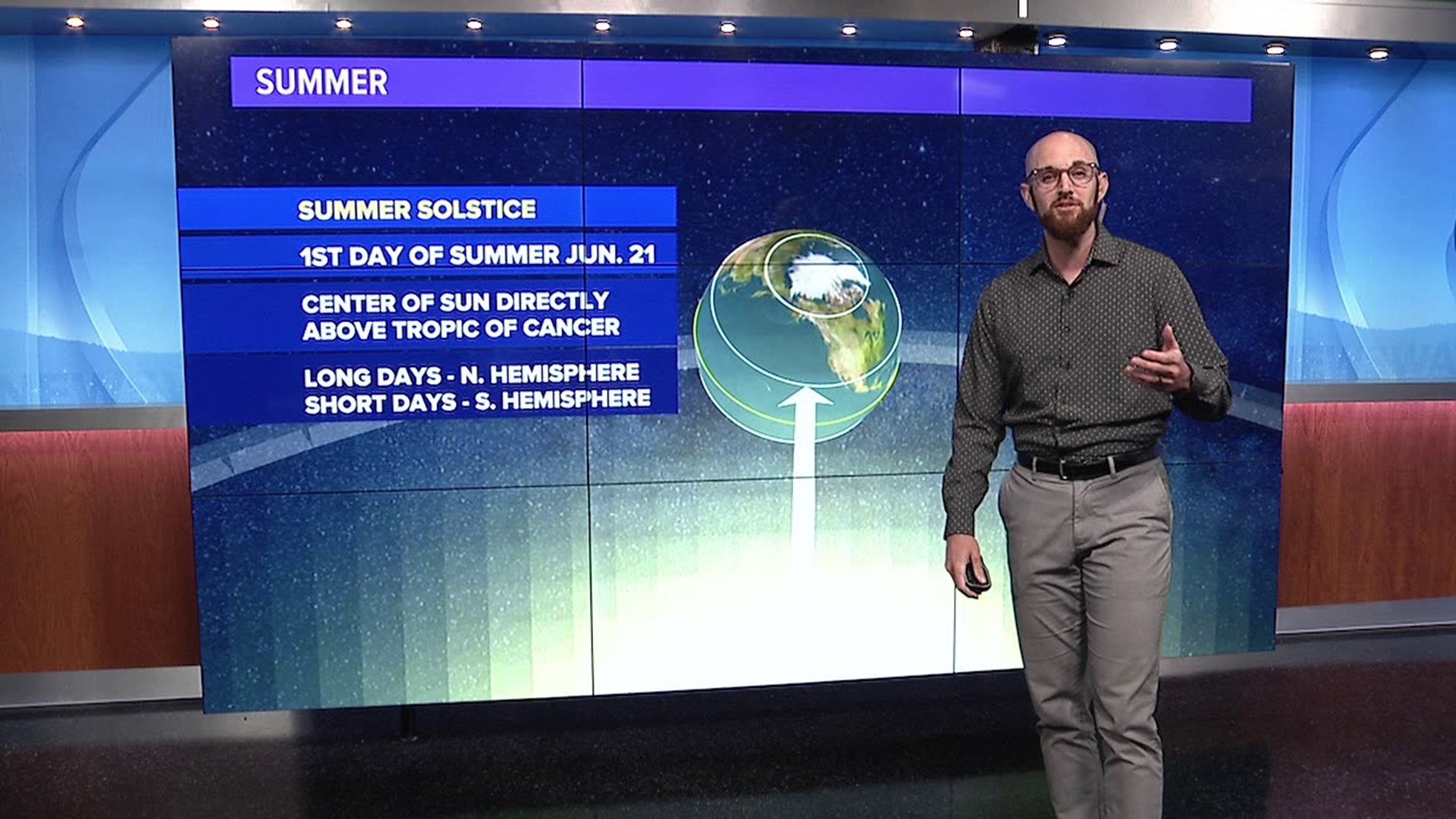PENNSYLVANIA, USA — For many of you your favorite season is about to begin, astronomical summer.
The fun begins, if you're a fan of summer, officially at 10:57 a.m. on Wednesday. But what exactly is astronomical summer?
If you're looking down on our solar system, it is the point where Earth is most tilted towards the sun.
The sun's rays are directly above what's known as the tropic of cancer which is about 23.5 degrees above the equator.
In the Northern Hemisphere, this is when we have the most amount of daylight.
As you get closer to the equator, you get mostly equal daylight and darkness.
Once you drop below the equator in Northern Hemisphere summer, you have a lot less daylight to work with each and every day.
In our area we have more than 15 hours of daylight this time of year and it's going to hang there for a couple of weeks before we start to retreat back towards winter's darkness.
That's what Northern Hemisphere summer looks like from space.
There's a little misconception in Northern Hemisphere summer because people think we're closer to the sun.
We're actually closer to the sun in the winter than we are in Northern Hemisphere summer.
Those warm summer days are due to us being most tilted towards the sun.
If you're a fan of summer, this is your time of year so kick back, relax, and enjoy.
Check out WNEP’s YouTube channel.

